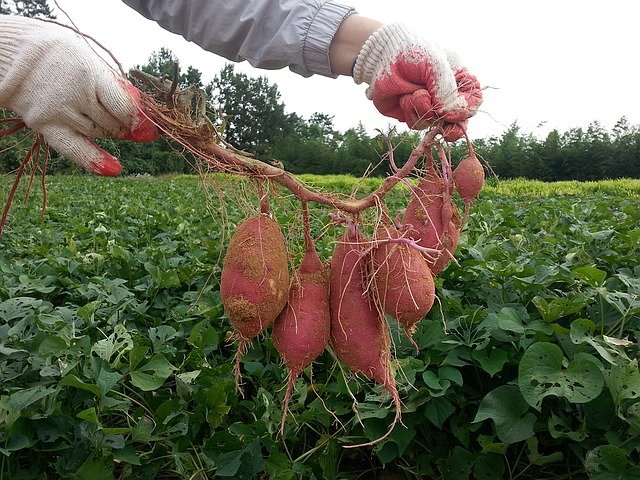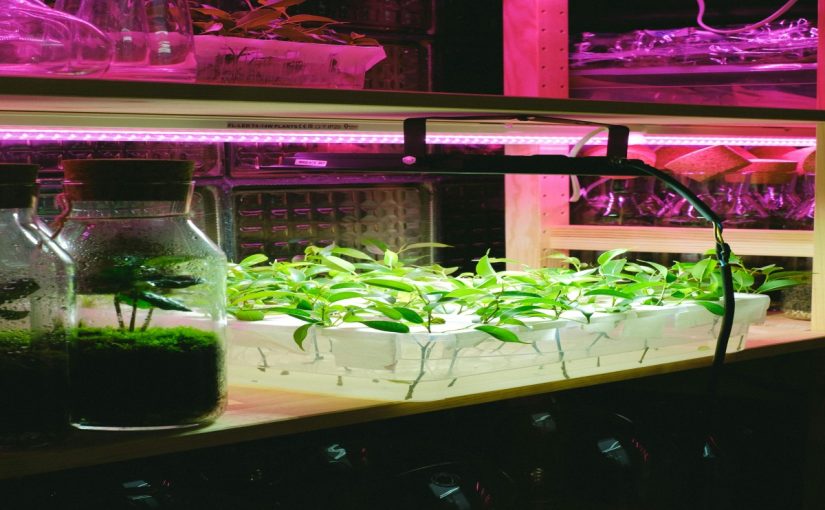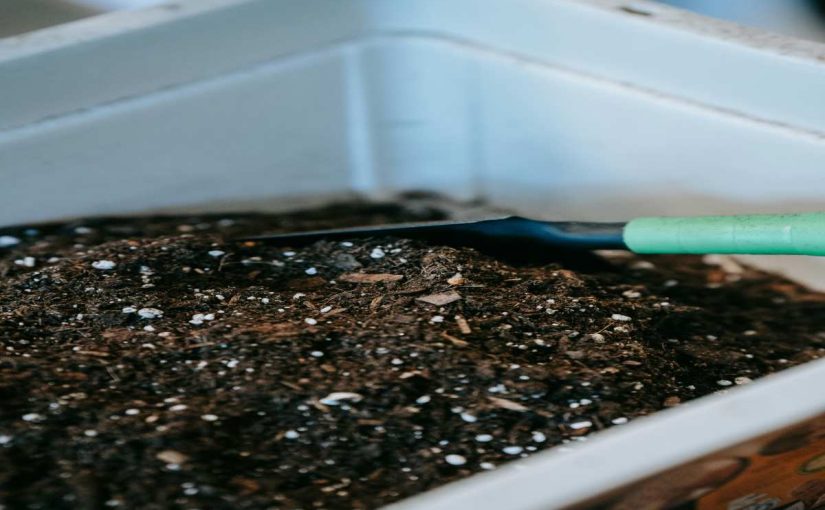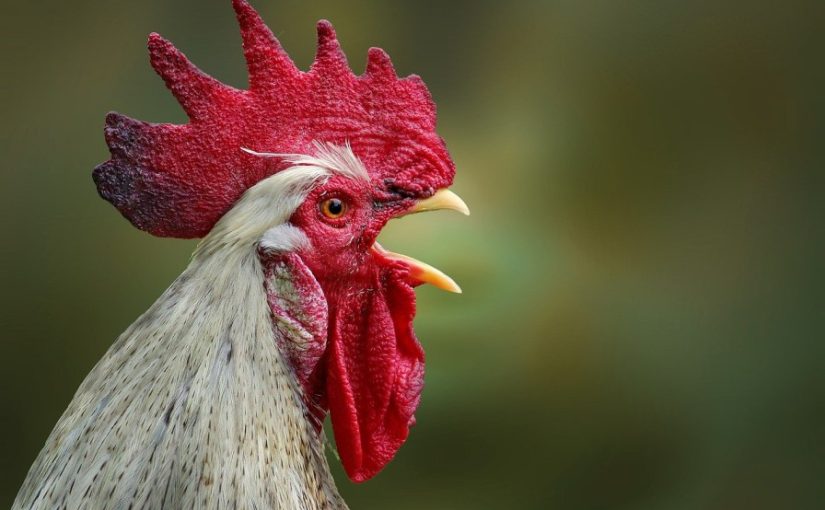Sweet Potato popularly known as Yams in some parts of North America and is one of the most favorite foods enjoyed by all. It is native to lands of tropical America and generally comes under the family of ‘Convolvulaceae’.
Sweet potatoes are rich in carbohydrates and hence, give a good amount of calories when consumed. Due to its high carbohydrate content, it is used as livestock feed. Sweet potatoes have sweet root tubers. Thus, it is the main source of starch, industrial alcohol, sugar syrup, and glucose.
How to Plant, Grow Sweet Potato?
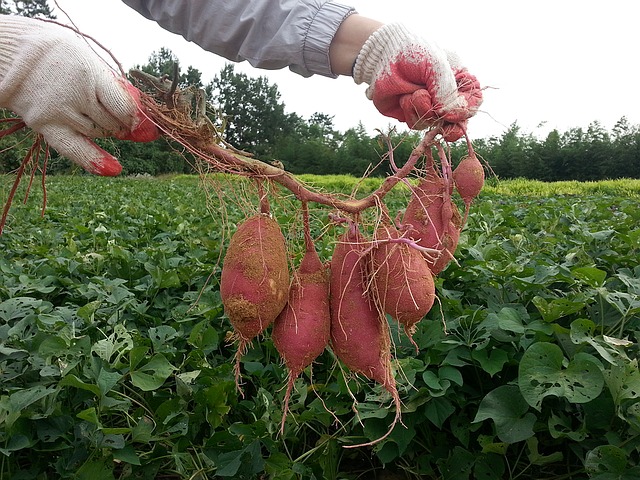
Climatic Conditions
Sweet Potato cultivation has a wide color range of tuber skin. This mainly consists of purple, brown, white color tuber skin. Farming is done mainly in tropical and subtropical climatic regions. It is generally cultivated in totally frost-free areas.
Soil specifications
Sweet potato cultivation requires soil that has a pH of 5.8 to 6.7. It can be cultivated in sandy as well as loamy soils. However, the best soil recommended for sweet potato cultivation is sandy loam soil with high fertility and good drainage system. It is advised not to cultivate in areas having light sandy and heavy clayey soil.
It is so because the tuber development in such soil does not occur well. Many varieties of sweet potato are cultivated. Among them, the most common variety is Punjab Sweet Potato- 21. This type gives an average yield of 75 QTL per acre and contains deep red color tubers having white flesh.
Also Read: Growing Mushroom for Your Diet
Other varieties from different states include:
- Varsha, which is grown in Maharashtra and gives an average yield of 62.5 QTL per acre.
- SreeArun, which is grown near Sreekariyam gives an average yield of 83 to 116 QTL per acre.
- KonkanAshwini, which is grown in Maharashtra gives an average yield of 70 QTL per acre.
- H – 41, Co 3, H – 42, and SreeRetna are some of the improved varieties of sweet potatoes cultivated in the US.
Land Preparation
Now, a question arises on how to grow sweet potato. Farming requires proper land preparation. It is essential to bring the soil to a fine tilt. Before sowing the seeds, it is essential to plowing the land around three to four times. This should be followed by the planking process. Ensure that the land is free from weed.
This is followed by the sowing process. The best time for sowing tubers in nursery beds in January or February. For planting vines, the best time is between April and July. To sow tubers, keep the depth to 20 to 25 cm. For spacing, it is advised to use the row to row spacing of sixty centimeters and plant to plant spacing of thirty centimeters.
Commonly, sweet potato farming uses vine cutting methods for sowing purposes. In this, the tubers are taken from the old vines and are then planted and prepared on nursery beds. Ridges and flatbeds are used for vine plantation. It is advised to use terminal cutting as it gives a better result. Also, the host plant should have at least four to five nodes.
You can sow around thirty-five to forty kilograms of tubers in half a Kanal land, which is then followed by the planting of vines in one-acre land. You can also treat the tubers by placing them in a plastic bag and soaking them in concentrated sulfuric acid for around ten to forty minutes.
Planting sweet potatoes
Sweet potatoes have unique properties and hence can be cultivated even in poor soil. There are chances of development of deformed roots if the soil is very clayey or is rich in the excessive sandy dirt. For creating a perfect environment, it is necessary for creating long, wide ridges spacing at least 10 inches. The potatoes are placed at a distance of 3 and a half feet from one another.
The plantations require plenty of compost. Avoid the use of fertilizers that are rich in nitrogen components. These produce lush vines and stunted tubers. If you are performing sweet potato cultivation in cold areas, remember to cover the soil with a plain plastic. This will help in keeping the soil warm, thereby promoting strong growth to the sweet potatoes.
Sweet potatoes cultivation and crop rotation
Sweet potato farming can be done along with rice crop rotation. This can be done for maximum usage of land. In such a case, sweet potatoes can be planted in December and January after the second harvest of rice. After sowing, apply a full dose of K2O and P2O5 which acts as fertilizers.
Also, apply nitrogen dose at the time of planting and after five weeks of planting. This fertilizes the soil and helps in providing better results.
After planting the vines, perform irrigation once in 2 days for ten days. After that, perform irrigation once in seven to ten days. Thereafter, before three weeks of harvesting, stop the process of irrigation.
However, irrigate the land before two days of harvesting. This provides better results. This process should be followed to grow sweet potatoes.
Weed Control
Weed control is another essential step undertaken during cultivation. Sweet potato cultivation requires the application of several treatments to prevent the growth of weed around the crops. Treatment solutions such as Metribuzine 70WP with a dosage of 200gram per acre or Alachlor at 2ltr per acre is applied to the field. This needs to be done before the sweet potatoes start sprouting.
Weed infests the plants even after sprouting. When around 5 to 10% sprouts have emerged, the sweet potatoes’ field gets infested with several varieties of weed. At this stageParaquat at 500 to 750 ml per acre is applied.
Protecting the plants against pest
Sweet potato weevils are long insects with a length of ¼ inches. These are dark blue heads, orange-red bodies, and wings. They lay their eggs into the stems and tubers. They lay their eggs on the tubers and stems. The fleshy roots contain sufficient nutrients for the larvae to grow, while the vines and leaves are a great source of nutrients for the adults.
Potato foot rot, a common disease in these plants are caused due to these pests. The plants infected with the disease have brown or black stems near the soil and at the ends, that does on enlarging.
These weevils multiply themselves quickly and can affect the whole field within a few days. Hence, they are hard to eliminate. But, with better-certified disease-resistant chemicals along with crop rotation after every four years.
It is advised to destroy all the plants from their roots that have been infected. Alternatively, you can pick these plants along with their roots, place them in a sealed container, and discard them with other household wastes.
Irrigating the field
Another important technique that is involved in all types of crop cultivation. Some crops require less water while others require more. Moreover, the amount of irrigation required for different crops is different at every stage.
Sweet potatoes are irrigated once in every 2 days after the stems are planted. This continues for about 10 days. Thereafter, irrigation is given once in a week or 10 days. The plants stop receiving irrigation before 21 days of harvesting. However, irrigation is just a couple of days before sweet potato harvesting.
Protecting the plant from different diseases
Apart from the above-mentioned points, it is very important to perform weed control in the initial days. Earthing up should be followed after one month of planting. This removes weeds and results in good yield. Weeds are automatically suppressed once the vines start to grow.
Also, it is important to protect your sweet potato cultivation from various diseases. Various diseases such as black scurf, early blight may destroy your plantation and may cause a great loss to the investment.
A black scarf is observed on tubers which in turn causes the plant to dry up. In this, black color appears on the tuber’s eyes. To avoid this disease, treat the tubers with mercury.
In early blight, some necrotic spots appear on lower leaves of the plant. It happens in areas having high moisture content and low temperature. To avoid this, prevent mono-cropping and follow crop rotation. Check for other diseases like common scab also. It is advised to perform pest control by using appropriate pesticides.
Besides, sweet potatoes are affected immensely due to fungal diseases. One such is the black rot, causing dark and circular depressions on the tubers. Infected sweet potatoes must be discarded properly, followed by curing the healthy roots of the same crop.
Stem rot is another fungal disease commonly found in these plants. The fungus affects the part of the stems that insects have injured due to careless sweet potato farming. Although plants will not die due to the disease but will result in poor quality yields. It is best to plant healthy slips for farming. This will minimize the chances of the plants from being infected by insects and fungus.
Are you afraid of mummification of sweet potatoes? Are you wondering how to save them and reduce dry rot? It is easy. Store the healthy and fleshy roots at 55 to 60 degrees. This simple step will help you a lot in saving your sweet potatoes as well as give you high yields.
Harvesting sweet potatoes
Lastly, harvesting needs to be done. These crops get mature after around 120 to 125 days of planting. Sweet potato harvesting is done at the time when tubers get mature and the crop’s leaves turn to yellow. But, the longer you keep the crop in the ground, the better yield it will be. How? If the potatoes are left for longer, they will be more nutritious as they will have high vitamin content.
Must Read: Onion Farming Skills? Here’s What To Do
But be careful and keep a track of the climatic conditions. On the arrival of frost, the vines will start to turn dark, and finally black. Beware, the tubers will start rotting and the yield will be wasted.
What are the best ways of harvesting sweet potatoes? Many often inquire about this, as they are not aware of the best measures. It is better to use a spading fork for digging tubers during sweet potato harvesting.
Harvest them on a bright sunny day. This needs to be done when the soil is completely dry. Store them in a well-ventilated area at 85 to 90 degrees Fahrenheit for a couple of weeks.
There is a sharp trend in the cultivation of sweet potatoes. Farmers are shifting the areas for cultivation of other cash crops that have a high yield and more demand in the market.

